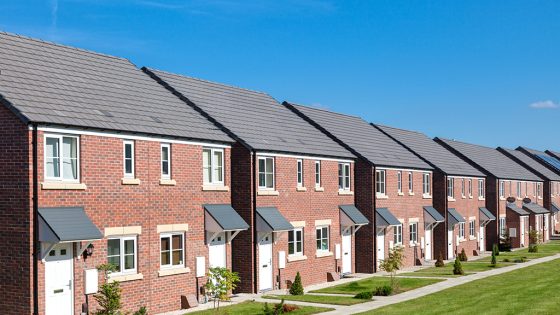Output in the construction industry is expected to grow by 2.5 per cent in 2025, thanks to a recovering housing market.
That is despite concerns around the Building Safety Act leading to “considerable delays” to some high-rise housing and commercial projects, the Construction Products Association (CPA) has said.
The private housing sector – the largest part of the construction sector – is experiencing a “gradual recovery in demand” thanks to falling interest and mortgage rates, the CPA said this morning (28 October) in its autumn forecast.
Private housing output is expected to grow by 8 per cent in 2027 and 7 per cent in 2026 – following a forecast fall of 9 per cent this year.
“Better prospects” for housebuilders are now expected, while the government’s proposed changes to the planning system could also ease the planning bottleneck, the CPA added.
It expects construction sector output to grow by 2.5 per cent in 2025 after a fall of 2.9 per cent this year. Output is also expected to increase by 3.8 per cent in 2026.
But the CPA warned the housing sector faces the same fundamental supply issues as previous forecasts outlined. These include a lack of planning resources for local authorities, issues around biodiversity and some “considerable delays” caused by uncertainty in the building safety space.
“The Building Safety Act, Gateway 2 specifically, and the Building Safety Regulator (BSR) appear to be leading to significant delays on construction project starts for higher-risk buildings,” it added.
Repair, maintenance and improvement (RM&I) work in the private space is also expected to grow by 3 per cent in 2025 and 4 per cent in 2026 – again, following a dip of 4 per cent this year.
The CPA also pointed to the upcoming budget, calling on chancellor Rachel Reeves to ensure further growth by stimulating demand in the private housing market and “substantially” increasing funding for affordable housing in the near term.
Though it said the outlook across the rest of the construction sector remains similar from its previous forecast, the CPA said Reeves’ policy decisions could have “significant implications for critically needed investment in health, education and infrastructure”.
Output in the infrastructure sector is expected to grow by 1.6 per cent in 2025, rising to 3.8 per cent growth in 2026, as work in the energy sector ramps up.
In particular, the CPA pointed to an increase in windfarm activity, after Reeves announced an end to the de facto ban on onshore wind following Labour’s election victory earlier this year.
It also said activity remained “strong” on major infrastructure projects including HS2 and Hinkley Point C, while work had continued at a steady pace in the rail, energy and water sectors.
The CPA did, however, warn that it is “difficult” to see significant growth in the water sector before 2026, and that this lack of growth could fail to offset decreasing activity on the Thames Tideway project as it draws to a close.
CPA economic director Noble Francis welcomed the improving outlook but warned that a number of “downside risks” still present a challenge to the sector.
In particular, he pointed to ISG’s collapse last month, which was the largest of more than 10,000 construction firms to go under in the past two years.
“High costs, project delays and skills shortages on fixed-price contracts acutely affect the whole supply chain,” he added. “In addition, concerns remain over whether the government will cut capital expenditure and pause, delay, review and cancel yet more investment in key infrastructure projects in the short-term to meet its fiscal rules.
“If so, falls in infrastructure activity could overshadow recovery in housebuilding and RM&I.”

